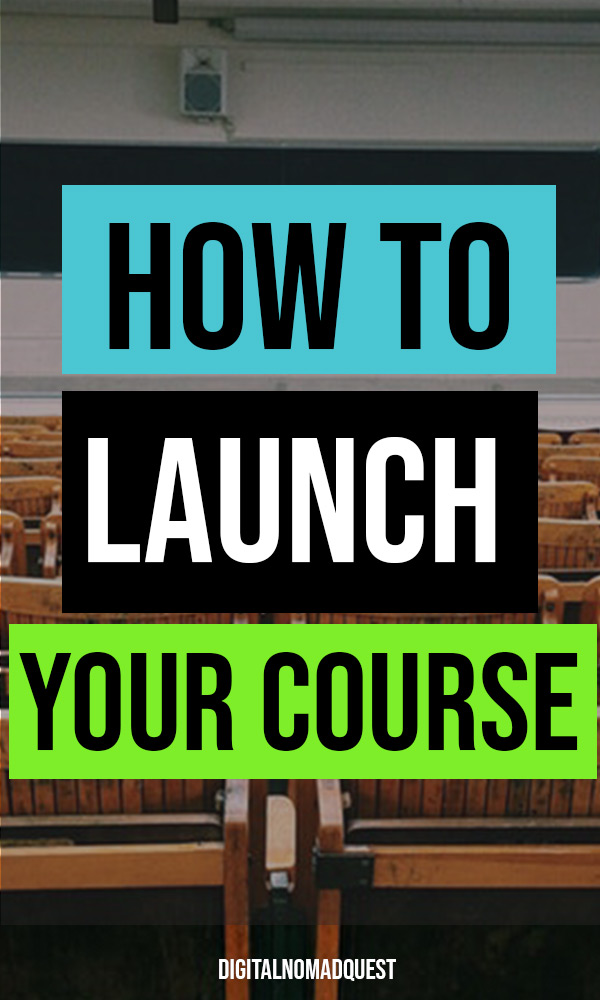In this video, we talk about how to launch your course, ft. Gillian Perkins. This is a snippet from my full interview with Gillian Perkins where we talk about why she stopped coaching and went from marketing agency to coaching to selling digital products.
How to Launch Your Course ft. Gillian Perkins
Below is a transcription of the podcast. This transcription was taken from Otter.ai so it might not be completely accurate:
This is the digital nomad quest podcast with Sharon Tseung. teaching people how to build passive income, become financially free and design the best lives. And then maybe we can talk about the marketing for your courses. So do you do evergreen courses? Or do you make it always exclusive to a certain period of time? And then you end it?0:24
Mm hmm. Yeah. So that’s a great question. And something that we have been experimenting a lot with over the past year. We’ve done live lunches, we’ve done evergreen launches. And we’ve also done hybrid launches where we built an evergreen system, but then we would only run people through it at certain times. So for example, like every month, we might promote whatever it is that triggers people getting into that evergreen funnel. So maybe every month we’re like doing a webinar, or we’re hosting a challenge or something like that. And that hybrid model is the model that I’ve come to life the best at this point in time. All the models Have some problems and those benefits. Live lunches are great because it’s really easy to do the scarcity that you need in order to compel people to buy, right? Because you’re saying like, it’s only available till this date, so people know they have to buy or else they’re going to miss out real quick when you say live launches, are you saying you’re live streaming to? Or is it just? Oh, no, not. Not might be a part of it. But I mean, you’re launching something on a specific day level for certain number of days, and then it’s unavailable after specific date, but everyone is on the same cycle. So it’s live. Yeah, it’s great because it has built in scarcity basically. And then, like you have a good way to motivate people to buy, but it is exhausting because you have to be so on. During that time. You have to create a bunch of content, often original content just for that you’re building the systems for this one time thing. And and if you think you can reuse those systems, the next time you launch six months or a year later, a lot of the time you have to rebuild most of them. Just because stuff will be out of date stuff will have broken, you’ll tweak stuff, you might have some new systems. So yeah, so it’s just a lot of work every time. And then with evergreen launches, the problem is primarily that they convert at a much lower rate, because not only do you not have that built in scarcity of a specific date that after this, it will be available. And yes, there are timers out there like deadline funnel that can help you overcome those issues but still doesn’t work quite as well. And then you’re also this is the biggest problem I see with it. You’re missing out on the like social proof that normally happens with a live lunch. During the live lunch, you had your posting on social media about the lunch and then people are responding to your posts and other people see their comments and they see that other people are excited about it. You might also be doing like a live webinar and so a bunch of people buy all at once and it it just create a lot of momentum for your life one the biggest problem though that I have With the live launches is actually the I don’t think it provides the best customer service to your audience. So basically you when you’re doing a live launch, you’re saying that we’re going to launch right now because this is the right time for us. Like as the business it’s the right time for us. We’re already been long enough, we’ve made you wait long enough. So now we’re going to let you have it. But the problem is that like, you’re going to be launching to your audience, and only a small percentage of them will actually need that solution that you’re providing to them. At that moment. A lot of them might have needed it three months ago, and now they’ve moved on, they find a different solution. They decided to you know, just do something different and some people might need it in the future, but they’re not ready. So you’re telling everyone this is for sale now, but it’s not applicable to everyone. You’re wasting a lot of people’s time and that means that you’re probably burning your list or burning your audience burning your reach a lot more than you need to. What’s nice about evergreen is that you can have it timed out, baby On when users are like your audience starts a certain action. So for example, they opt into your freebie. And then two weeks later, they get the option to buy your product. So you’re going to be giving it to them when they’re most likely needing it. And so that’s going to be the most helpful to them, and also the most likely to earn you money. Yeah, right. But like I said, there are some problems with evergreen. So that’s why we’ve been kind of moving more towards this like monthly or quarterly launch model, where we’re doing these challenges or webinars or workshops, these different events that kickoff a launch, the lunch is happening on a specific date, everyone’s going through it at the same time, but it’s happening on a regular basis. So every month, there’s an opportunity for people to join the course. So then we’re using things like deadline funnel to create more urgency during the launch, but we also get that social proof.4:56
So it’s open for like how long and then you close it off. You do another month, and then you’re like, or it’s out of5:02
depends on how long the your launches are between them two launches that we’re doing on this like recurring cycle right now. One of them is for startup society. And it’s a challenge, the four day challenge followed by a week long open part, and we’re doing it each month. And then the other one is for Channel lunch. And it is a workshop that we’re doing. And we do it once. I’m actually doing a little bit more frequently than once a month. It’s not like on the same day every month but just a couple times a month for doing this workshop and the open cart period is just5:33
three days after the workshop. Oh cool. And don’t like maybe you can walk through the the marketing for like, that launch. So is it webinars it certain amount of emails per week or whatever, like, what does that look like?5:49
Yeah, so what I found is that selling via like social media posts doesn’t work very well. Okay. So I try to use social media to as much Possible get people into the things that do convert Well, in my, like, let’s get really nitty gritty right now in my experience emails. And this is like unpopular opinion, I think emails converted like half a percent. Okay, so I just say it’s unpopular, because most people claim higher than that. But I’ve never found much higher than that. But I mean, percent is fine if you have a big enough audience, right? And of course, the more tailored your product is to your audience, and if you segment out your email list, and you might get a higher conversion rate than that, just like blasting your entire list. But if we can get people into well designed workshop or a challenge, then those typically convert at five to 10%. Okay. Wow, yeah. So if I can drive people into those workshops or challenges, then we’ll make a lot more sales. The easiest way to do it is to promote your life. You often offers on social media, it gets people into your email list and you tell your email list about the events. It’s easiest, but doesn’t work the best. Okay? Hi as you are losing people at each step of the process, so if I say to 100 people, like if I if 100 people see my Instagram post, and I’m promoting a freebie, and Okay, then maybe let’s use a bigger number, this is going to get, let’s
7:27
say, 1000 people.
7:30
Okay, and then 50 of them opt in, I think this is kind of high, but 50 of them opt in to people on our email list, we promote the event, the event is a webinar, okay? How many of those people actually sign up for the webinar? Maybe like 20%. So in this example, that would be 1010 people sign up for the webinar, how many people show up? For Yeah, okay, really like maybe three, three or four. And then if you have that great five or 10% conversion rate on the webinar, You probably sold zero. Right? So just gets really small really bad. So yeah. How about that first big dip, which is on your social media post your instead promoting the event itself? So you’re promoting the webinar, you’re promoting the challenge. And then if 20% of those people that want to said no, it was, I said, 50 people, so 50 people sign up for the webinar, then you end up with somewhere between like 15 and 20 people at the webinar, and then you’ll make a sale. Hmm. So if you can just cut out like any step of that process, then you’re going to increase your conversion rate overall.
8:34
Cool. So sounds like the workshops and the challenges are like,
8:39
that’s like good stuff. Okay, cool. So I hope you guys enjoyed this episode, please make sure to rate review and subscribe. It really helps our podcast grow. And thanks again. I’ll see you guys in the next one.
Transcribed by https://otter.ai


